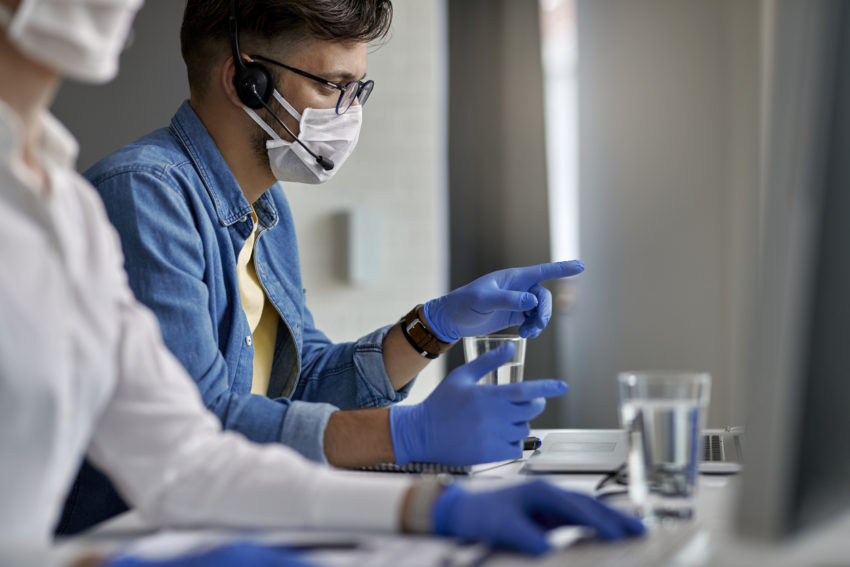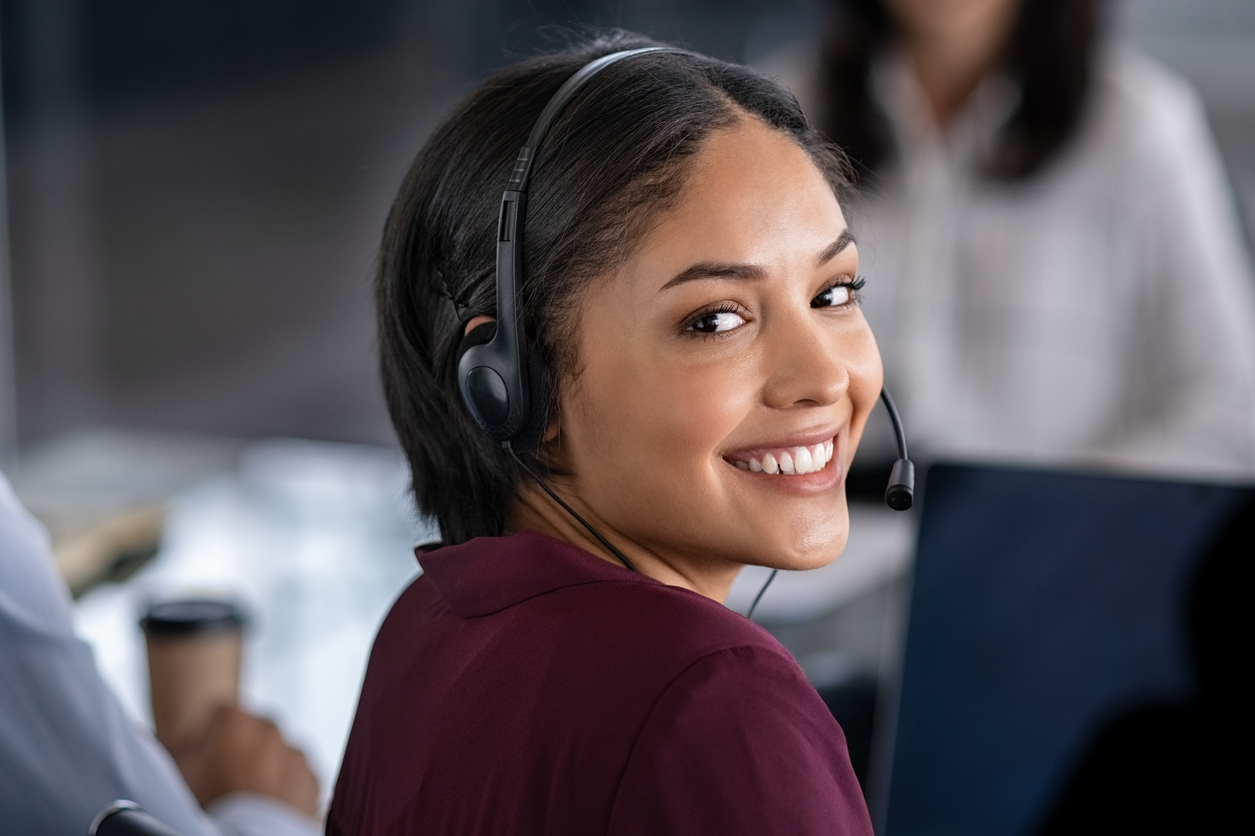
Share On Social!
Have you or someone close to you tested positive for COVID-19?
You should have gotten a phone call from a local public health worker─a “case investigator” or “contact tracer”─who would give guidance on monitoring symptoms, quarantining to prevent spread, and more.
But some cities don’t have enough people to make these important calls.
Also, some people don’t answer or return phone calls from unknown numbers and may be uncomfortable answering questions.
That is why, to reduce the spread of COVID-19, cities must invest in extensive contact tracing efforts and encourage the public to answer or return phone calls from the health department.
“Case investigation and contact tracing, a core disease control measure employed by local and state health department personnel for decades, is a key strategy for preventing further spread of COVID-19,” according to the CDC. “Communities must scale up and train a large workforce and work collaboratively across public and private agencies to stop the transmission of COVID-19.”
What is Case Investigation of COVID-19?
In a typical situation for an infectious disease, the positive case and all of the people they came in close contact with would receive phone calls from public health workers with guidance on monitoring symptoms and staying home to prevent further spreading the disease.
Case investigation is when public health workers interview individuals who have tested positive for the novel coronavirus. They ask them to recall and list individuals with whom they’ve been in contact during the time they may have been infectious.
Contacts are often defined as someone who was within 6 feet of an infected person for more than 10 or 15 minutes.
Experts estimate the number of contacts are 10 with social distancing and increase to 19 without social distancing.
The case investigator collects information on each contact.
What is Contact Tracing of COVID-19?
Once the contacts have been identified, they are called and advised by public health workers, called contact tracers—ideally within 24 hours to limit further spread.
“Contacts are provided with education, information, and support to understand their risk, what they should do to separate themselves from others who are not exposed, monitor themselves for illness, and the possibility that they could spread the infection to others even if they themselves do not feel ill,” according to the CDC.
Contact tracing is 100% confidential. None of the information collected through contact tracing is shared with the individuals called or with government agencies.
“Effectively stemming the viral spread requires that everyone in contact with a person who has tested positive is identified and contacted as soon as possible, ideally within 24 hours,” according to a press release from the Association of State and Territorial Health Officials (ASTHO).
If infected people are informed quickly, they can stay home and avoid spreading COVID-19 to others.
Additionally, if informed quickly, people at increased risk for illness─like older populations and people with chronic kidney disease, chronic obstructive pulmonary disease, coronary artery disease, diabetes, and/or obesity─can more diligently monitor for symptoms and seek medical care.
Contact tracing isn’t new. Public health has been practicing contact tracing for decades for HIV, sexually transmitted infections, and tuberculosis.
Contact Tracing Can Reduce Disparities in Health
People infected by COVID-19 are contagious even if they don’t have symptoms. That is why it is crucial to find people as soon as possible after they have been exposed to ensure they do not unknowingly spread the virus.
Contact tracing is uniquely useful in determining whether individuals have come into contact with vulnerable populations after testing positive.
With proper contact tracing efforts in place, public health workers can alert those at increased risk for illness to ensure they monitor symptoms and seek medical care as early as possible.
Additionally, with proper contact tracing efforts in place, public health workers can alert essential workers to ensure they don’t go to work and they separate themselves from others in their home.
Failing to conduct contact tracing can leave essential workers and vulnerable populations behind and exacerbate disparities in health.
“If we are unable to successfully identify cases, track/isolate and slow the transmission of the virus within our community, the downstream effects (i.e. those who end up sick and hospitalized) will be amplified,” wrote epidemiologist Kyle Freese in an op-ed in AZCentral.
 We are seeing this right now among Latino and Black populations, in large part because they unable to work from home. Essential workers are on the front lines, in health, retail, and food jobs, thus exposed to COVID-19 at higher rates.
We are seeing this right now among Latino and Black populations, in large part because they unable to work from home. Essential workers are on the front lines, in health, retail, and food jobs, thus exposed to COVID-19 at higher rates.
Unfortunately, distrust or fear may be barriers to cooperation with contact tracers among the populations most in need of this approach.
The current state of immigration enforcement has made people reluctant to call attention to undocumented family or community members even if for critical health services.
Additionally, many people are uncomfortable sharing their health information because they don’t trust who may have access to it or how it could be used in the future.
Hiring people from within disadvantaged communities to be contact tracers can help build trust and improve cooperation when contact tracers call community members.
For example, because Black and Latino neighborhoods have been most heavily affected by coronavirus cases and deaths. These neighborhoods should be prioritized when hiring contact tracers and when conducting contact tracing.
Contact Tracing Picks Up Where Individual Responsibility May Fail
Until vaccines are widely available, the available infection prevention approaches are:
- Personal hygiene: washing hands, wearing a mask, washing mask, not touching face, and not shaking hands or hugging others
- Cleaning and disinfecting: wiping frequently touched surfaces with detergent/soap and disinfectant, and increasing air circulation
- Physical distancing: maintaining 6 feet distance between others, installing barricades, working from home, and staying home
- Quarantine and self-isolation: those with symptoms, with the disease, or with known exposure to someone with the disease stay home for 14 days and separate themselves from others in the home
Although some state and local governments have implemented stay-at-home orders, face mask mandates, and limitations on public gatherings, the bulk of the responsibility of infection prevention approaches in America has fallen on individuals.
With few options to require compliance with infection prevention approaches, Americans are particularly vulnerable to whether or not others are aware of and/or believe in infection prevention approaches.
This is particularly problematic due to the high proportion of infections from individuals without symptoms.
We cannot rely on individual responsibility and wait for people with symptoms to engage in personal hygiene practices and to quarantine or self-isolate.
After all, even if people are wearing a mask in public, there is no way to know if they are washing it daily.
Active surveillance is crucial to identify and notify people who may have been exposed and to provide them with the tailored information and guidance on the specific infection prevention measures they should comply with while they are the most contagious.
That’s where contact tracing comes in.
“Public health experts know that social distancing and isolating people can help prevent the spread of the virus, but these blunt strategies also cause great economic and personal hardships,” according to George Washington University. “Up until now, lacking extensive testing and contact tracers, most communities in the United States have closed many businesses and schools and told students and employees to work or attend classes remotely. To help pave the way for a safe reopening of restaurants, schools and businesses, state and local leaders need an expanded ability to test for the virus that causes COVID-19 and an army of contact tracers who can quickly identify people who have been exposed.”
What You Can Do
Spread the word about the importance of cooperating with contact tracers.
Encourage others to answer calls or return voicemails from their health department. Because not all health departments can afford Caller ID technology, you may have to look at their website and social media pages to find out what specific phone numbers they will be calling from.
Stand up against misinformation about contact tracing. This public health practice is 100% confidential and is essential to save lives.
Use these sample messages to share on social media:
- We can work together to help slow the spread of #COVID19. You can do your part by answering your phone if you get a call from your local health department. #ItTakesAVillage https://salud.to/answerthecall
- Contact tracing is essential to slowing the spread of #COVID19. Your local health department needs your help to reach those who have been exposed. Answer the call. #RacetoTrace https://salud.to/answerthecall
- #COVID19 is disproportionately impacting Black and Latinx communities. Your local health department needs your help to reach those who have been exposed. #AnswerTheCall https://salud.to/answerthecall
- Privacy is important. That’s why contact tracers don’t reveal names when calling those who may have been exposed. #StopTheVirus https://salud.to/answerthecall
- If you are diagnosed with COVID-19, someone from your local health department may call you to check-in on your health, discuss who you’ve been in contact with and, and ask you to stay at home to self-isolate. #AnswerTheCall https://salud.to/answerthecall
- Make the choice to help your health department in the fight against COVID-19. It will help keep you, your family, and your community safe. #StopTheVirus https://salud.to/answerthecall
Stay up to date with health equity efforts in the aftermath of COVID-19!
By The Numbers
25.1
percent
of Latinos remain without health insurance coverage



